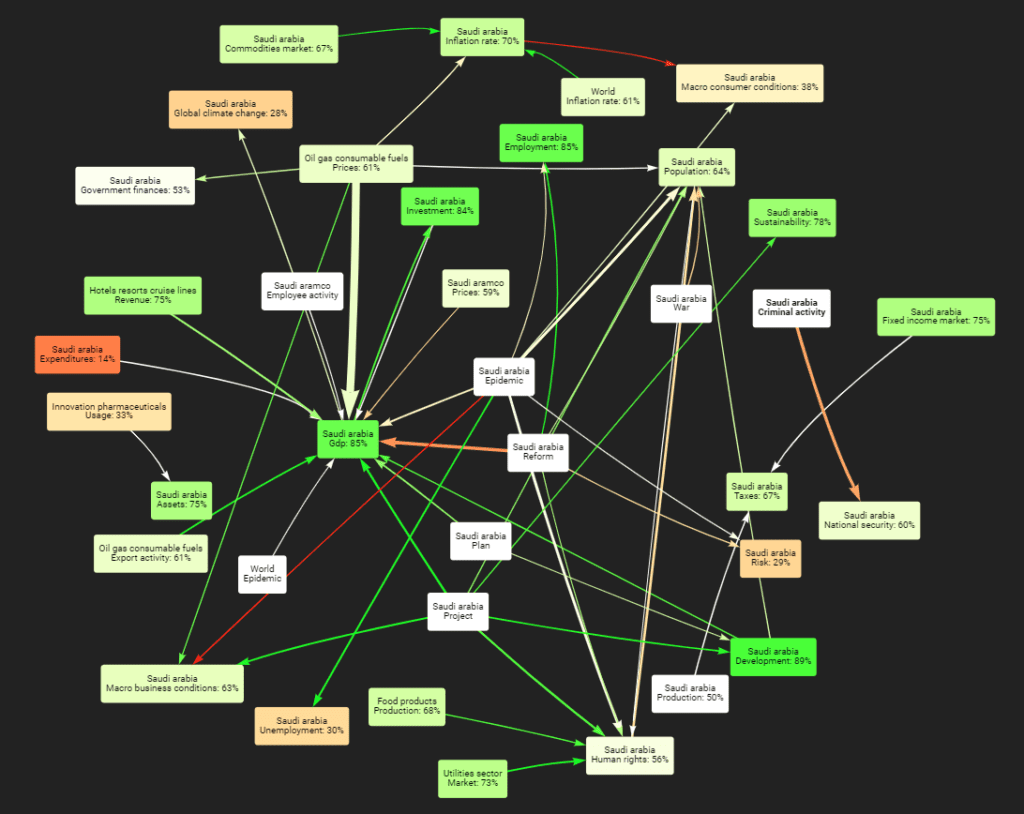We have described in a previous paper [1] the usefulness of the analogy of Go to understand the dynamics of the relationship between China and the rest of the world.
With this lens, we contend that a geopolitical event in December 2022 has not received the attention it deserved: the three-days visit of Saudi Arabia by Xi Jinping, China’s President.
The fact that China is pushing its Go pieces in the Middle East is not new, but its consequences deserve more attention.
In the short term, China is already Saudi Arabia’s largest oil customer, and Saudi Arabia recovered in 2022 its position as largest oil supplier to China, at a time where Europe is looking for find alternative sources of oil due to the war in Ukraine and the subsequent embargoes.
However, Xi also signed a number of other cooperation deals with Saudi Arabia’s Crown Prince, Mohammed bin Salman Al Saud, not all of which were disclosed. These increased relationships reinforce China’s support to the ambitious Vision 2030 plan of Saudi Arabia, which aims to decrease Saudi’s dependence on energy and become a major industrial and touristic hub.
For example, the Saudi $500B NEOM project includes a futuristic linear city (The Mirror Line) built in the desert which has already awarded its tunneling contracts to joint ventures including a China company and South Korean companies [2].
This all makes sense with the view that China is playing its next move in a worldwide go-game, focusing on the Middle East, both to increase its access to energy sources, but also to use China’s growing scientific, technical and geopolitical power to replace Western influence in that region, at a time where the pivoting of the US toward the Asia-Pacific region is more destined to enforce a stalemate vs China than achieve any Go-gains.
The convergence of Vision 2030 and the Chinese’s Road and Belt initiative should not come as a surprise. These two non-democratic countries are both betting on science and technology to lift the fortunes of their countries, and their leaders can promote and fund large transformational infrastructure projects which project a modern vision of their respective future to their populations. By contrast, the Western democracies are mired in their slow processes [3] and consumerist attitude while globally losing faith in science and a technologically driven future.
The steady progress of China in science and technology is leveraged as a “soft power” source, and in the field of civil engineering for example, is used as a way to repay in infrastructure their energy imports from Saudi Arabia, increasing the probability that such exchanges will no longer be realized in US dollars, therefore weakening the status of the dollar as the world’s reserve currency [4].
While making predictions is always risky, we expect the next major move of China’s Go game will be related to fighter jets: when Saudi Arabia announces it purchases 5th generation fighter jets Shengdu J-20s instead of the Lockheed Martin F35s that the US won’t sell them, we will know that alliances in the Middle East are shifting.
If you want to understand better how we build such analysis using AI, check www.causalitylink.com or the attached current causal graph of Saudi Arabia.
[2] https://www.neom.com/en-us/newsroom/neom-tunneling-contracts
[3] https://causalitylink.com/2022/10/12/realclearworld-how-to-beat-chinas-economic-autocracy/
